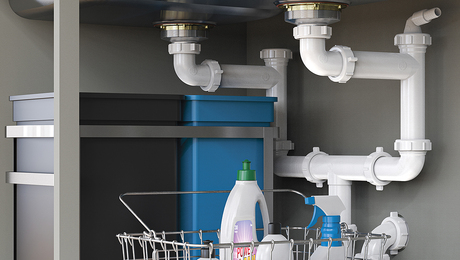Q:
I know that most building codes require separate exhaust flues for each combustion appliance. I am curious why, and if it would be OK to use the flue that exhausts my boiler for an “emergency heat” woodstove. The stove would be used only in the event of a power outage and thus never at the same time as the boiler.
Carl Whalen, Manchester, NH
A:
Mike Moore, a mechanical engineer with Newport Ventures in Schenectady, N.Y., responds: You’re right that the International Residential Code requires that separate exhaust flues be used for solid-fuel burning appliances (section M1801.12 of the 2012 IRC). No exceptions are given to the rule, so even a woodstove that is supposed to serve only as an emergency heat source would not be permitted to be vented this way.
The code is great at providing instructions, but poor at providing explanations. We can assume that the primary concerns in venting combustion appliances are risk of fire, safety hazards from spillage of combustion gases, and condensation of gases in the flue. Condensation of gases can lead to flue corrosion, taking us back to spillage of combustion gases and chance of fire.
In order to avoid these conditions, the diameter, height, and lateral length of a flue must be sized for the appliance that it’s venting. If the flue is too big or too small, it won’t adequately vent the exhaust, which can lead to spillage into the area around the appliance. The problem with trying to vent multiple appliances into one flue is that it’s difficult to size the flue so that it vents properly during both individual and combined operation.
Solid-fuel-burning appliances like your woodstove are particularly dangerous for two reasons: creosote and embers.
Creosote, which is highly flammable, is deposited on the flue when combustion gases from wood-burning appliances condense inside the flue. Over time, creosote can begin to choke down the flue passageway, resulting in greater condensation potential and more creosote. This is a bad enough problem in itself, but if the wood-burning appliance shares a flue with a gas-fired appliance, the flue may become restricted (i.e., undersize) to the point where combustion gases from the gas-fired appliance spill back into the living space. It’s pretty easy to recognize spillage of combustion gases from wood-burning stoves (smoke in the room), but less obvious to note the spillage of combustion gases from gasfired appliances, making this a dangerous situation.
As for those embers: Over time, the burners in a gas-fired appliance can become fouled, leading to incomplete combustion and higher levels of methane in the exhaust gases. If for whatever reason a woodburning stove operates simultaneously, the embers could ignite the methane in those exhaust gases, which could in turn ignite the creosote on the flue walls.
The complexity of this issue and the potential severity of the consequences for failure in design or implementation make this decision an easy one: Stick with separate flues.

























